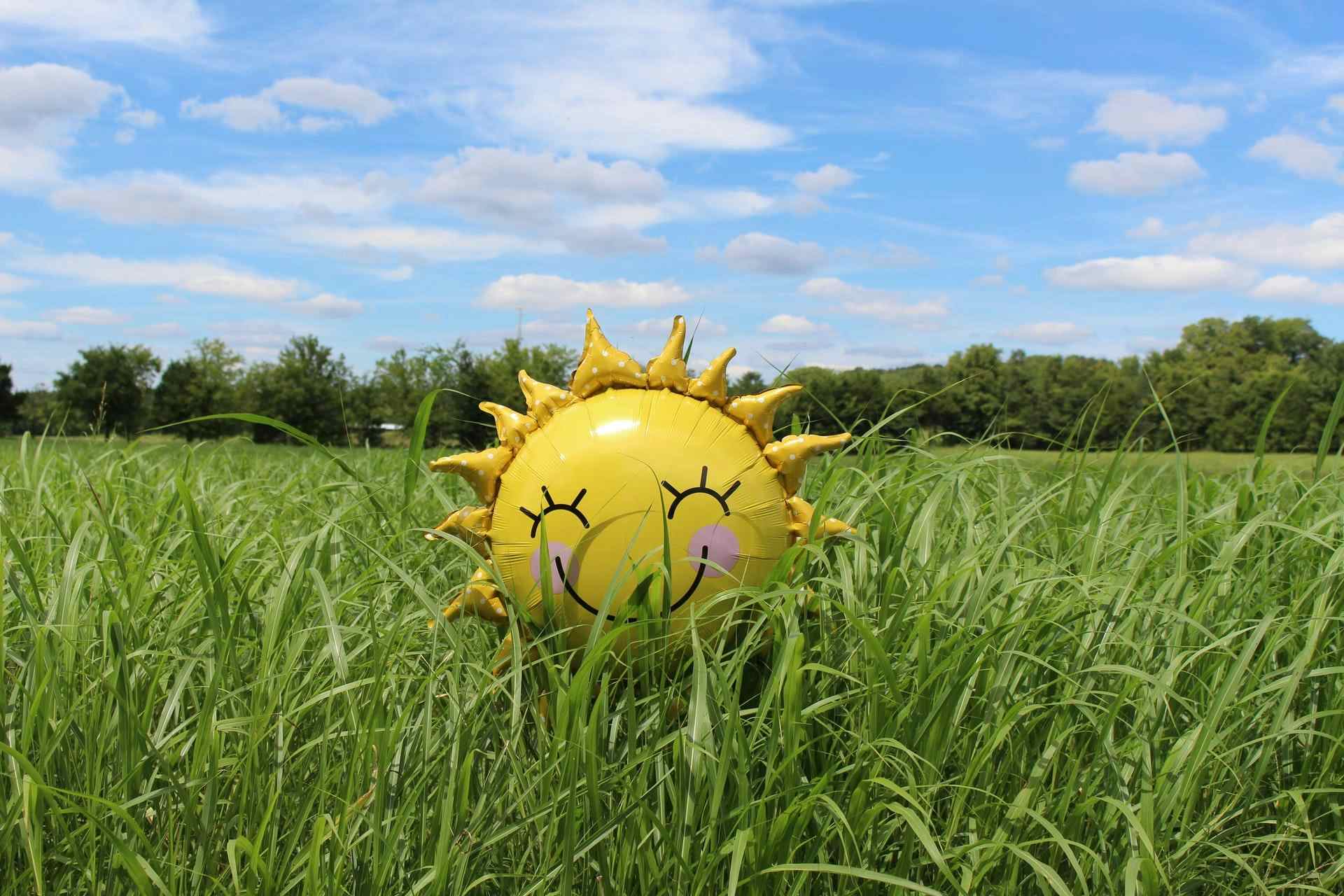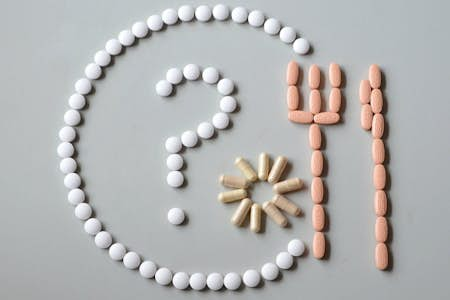As summer dwindles and autumn arrives, many of us wish for the sunshine to return. The shift in our circadian rhythm is a minor point for some, but for others, the reduced daylight hours trigger a physiological process. The exact causes are a matter of debate, but the feelings of depression are genuine.
Symptoms of SAD can be diverse and are often interlinked. The most common symptoms include:
- Stress
- Depression
- Anxiety
- Poor Sleep
- Low Energy
- Reduced Appetite
Let's explore everything we need to know to tackle such forms of depression.
What are the symptoms and causes of seasonal affective disorder?
When your body comes into contact with natural light, reactions occur in chemical elements in your skin. This releases a range of hormones, each of which drives several vital processes in the body:
- Serotonin makes you feel happy and can relieve stress and anxiety
- Melatonin helps you sleep and will improve your overall energy levels
- Vitamin D fuels cellular activity and is essential for growth and repair within cells
Each of these elements is a crucial building block when you want to live a happy life. The problem is that SAD causes:
- A drop in serotonin (happiness) and melatonin (sleep-inducing) levels in the blood due to reduced daylight exposure
- Lower levels of Vitamin D slow down vital cellular processes in the body
- Fewer opportunities for outdoor socialising, reduced chances to exercise, and a tendency to feel withdrawn
- Weight gain, frequent mood changes, and sometimes major depression
- Loss of interest in friends, hobbies and activities that used to bring happiness, leading to depressive episodes
This simple definition of SAD also explains why it’s more acutely experienced by those who live further north, where there is naturally less daylight from late autumn. The mental health impact of the coronavirus lockdowns has also made experiences of SAD worse in the past two years.
Has SAD always been around, or is it a recent development?
Looking back on your life, it may be tempting to conclude that mental health is something that has only become a problem in the last decade or so, but that hides the complete picture.
There was a stigma around even the most common conditions in years gone by, making it virtually impossible to speak openly. We hear about SAD and general mental health much more today simply due to living in a more open and accepting society. If you are feeling a certain way and identify with many of the symptoms of SAD, it’s unfair on yourself to conclude you must be the first person you know to feel this way.
SAD is a naturally occurring human condition that many generations of those before you might have lived with. So you voicing it and reaching out now is not because you are unable to cope; it’s that you know there’s help there so you can enjoy your golden years in the way you deserve.
Does SAD get worse with age?
Interestingly, SAD improves with age, which is perhaps unexpected. The typical onset age for SAD is 18-29, and people in this age range are most likely to experience it, and to a greater degree.
While children rarely receive a SAD diagnosis, there is no physiological reason why someone under 18 can’t develop it. Data from the United States CDC shows the following key trends for those experiencing symptoms of depression:
- Incidents of SAD are highest in the 18-29 age group (21.0%)
- This decreases to 18.4% for those over 65
- There’s a dip down to a 16.8% incident rate for those aged 30 to 44
Figures from the NHS match this trend while also diving deeper into the issue of SAD. They show that as much as 3% of the older population will suffer from SAD at any given time, with women making up 80% of all sufferers across all age groups.
This shows that you are not more likely to experience SAD when you reach retirement age. It is, however, essential to note that the impact of SAD may be more severe with loneliness and isolation more likely with older age. That said, these are figures averaged across a large population sample, so just because you or a loved one has never had SAD doesn’t mean you won’t have to address it in later life. The key is to know how to take steps to restore your quality of life.
What can you do to start treating SAD at home?
While mental health is a deeply personal experience, there are still many things that we can do. The following is not a comprehensive regimen but a list of starting points that you can adapt to meet your needs.
SAD predominately occurs during autumn and winter, so this is the period we’ll focus on. The trigger for it is the reduction in daylight and how this impacts the body's photochemical processes. It’s important to remember this because it tells you that SAD is a physical condition. Not just something that happens when someone wishes there was a sunny day to enjoy.
Here are some key questions that can help reshape a daily routine to address the triggers of SAD:
- What time is the morning alarm set for?
- What is a typical time to go to bed at night?
- Where is the majority of daylight spent?
- How can regular exercise be achieved?
- Would setting a weight loss target provide motivation?
A consistent sleeping pattern throughout the seasons will help ensure a well-regulated set of bodily processes. For example, you might wake up with energy when there’s sunshine outside in the summer. In contrast, it’s all too easy to get an extra hour if it’s cold and dark outside during winter. Something as simple as set times for waking and sleeping throughout the year can help you develop the basis for a healthier routine.
Thinking about where and how they spend daylight hours will allow you to consider alternative ways to get more sunshine and reduce the impact of SAD symptoms on daily life.
We spoke to Lydia from Wild Swimming Cornwall, who told us: "Heading outdoors is an excellent way to stave off the effects of SAD. Even better, if you can participate in a regular outdoor activity such as cold water swimming, with a motivational community to participate and have fun with it’s even better. We’ve found that whilst swimming outdoors in the darker months can be challenging, the rewards are well worth it. We feel more motivated, less depressed and more confident as a result."
Can sunshine be added to the day to treat SAD?
The rigours of work and family life may make you feel like you have to fit into a set routine at the expense of your overall mental health. So while you cannot move many things in life to different times in the day, there are many that you can. And if you have to do something at a specific time, you could change where you do it to help add more exposure to daylight:
- Working by a window during the daytime will help increase exposure to natural light and limit the impact of SAD
- Taking the dog for a walk before sunset or during sunrise will provide some much-needed bright light stimulation the natural way, even when there is less sunlight
- Having access to a natural light lamp and reducing the brightness of blue light from screens will help restore the natural balance the body needs and increase high Lux level exposure
These types of shifts will help as you enter your later years, and you can also pass them on to the next generation, who are more likely to suffer from SAD. The NHS and the Nation Institute of Mental Health recognise that the old ‘winter blues’ are now something we need to address and think of as winter depression.
How do doctors treat seasonal affective disorder?
The brain contains billions of neurotransmitters which play a role in determining the overall mood. One of the most common causes of action a doctor will take is prescribing antidepressant medication. The idea is to use the medication as support that helps sufferers of SAD take other action to improve their mental health.
Your doctor may advise you to seek cognitive behavioural therapy and talk openly about how SAD affects you. You may also find that a steady supply of long-chain carbohydrates throughout the day will help balance fluctuations in your hormones. Porridge, muesli and brown bread are all well-balanced options to consider.
The point here is not that there are many approaches to choose from. As well as seeing your doctor, conduct your own research to find the right path for your needs.
Does SAD impact men and women differently?
The fact that 80% of all SAD sufferers are women is a trend that’s repeated across age groups, and it’s one worth thinking about in a little more detail.
While women are significantly more likely to suffer from SAD, it doesn’t necessarily follow that the severity of the impact is the same. If you consider that isolation and loneliness will exacerbate the effects of SAD, then men could be at higher risk of experiencing a more severe fallout from SAD.
Men tend to be less social, more likely to have difficulty expressing how they feel, and most crucially, they are less likely to seek out help. These three factors are heavily interlinked and can make it significantly harder for older men to get help and support. While statistics on this area are still in their infancy, it’s worth noting that there are some general things that we can do specifically to help men who struggle with expressing how they’re feeling:
- Providing stimulation through hobbies that are active, not passive, will provide some much-needed support and focus
- A routine for socialising, such as a sports club or lunch club, that follows a set weekly routine, will help provide more structure
- A more active role with children and grandchildren can also help provide greater social stimulus for older men who live alone
The importance of a kind approach
Being kind will allow everyone to reach out and get the help they need. And being kind to a friend or loved one suffering from SAD is also the best way to make sure they feel listened to and able to follow advice from sources like the NHS or the United States National Institute of Mental Health. So here are a few of the critical things that it will pay to remember:
- Everyone is different and will experience the changes in the seasons in their own way
- It may be tempting to try and tell someone who has SAD that they may have bipolar disorder, but these types of diagnoses are always best coming from a professional
- SAD is not a sign of weakness or something to be ashamed of — it’s a condition that can be addressed just like any other, even if it presents like a major depressive disorder
- Opening up and speaking about experiences with SAD will allow those in need to get the input they need to enjoy life again — psychotherapy and light therapy often help
- Speaking to a healthcare provider who can advise on things like behavioural therapy, boosting serotonin levels, and even rarer instances of summer depression will also help
Putting these ideas into practice may not always be easy, but they can make all the difference.
The key to treating SAD
Regular communication, exercise, healthy eating and an active approach to good sleeping habits will all lay the foundations for a happier way of life. The key is to work on ways to increase melatonin and serotonin production in the body, and something as simple as light therapy or daily exercise can achieve this for many.
In more severe cases speaking to a mental health specialist about the benefits of antidepressants is also advisable. This will allow those who need some extra help to get the initial support they need while looking to find routines and habits that help manage the symptoms of SAD.
The final thing is to remember that SAD will pass — typically with the winter months — and is nothing to be ashamed of or hide away from. It’s a real condition with a physiological trigger, the nature of which doctors are currently actively researching. Taking steps to address the impact it has on daily life is possible by following the ideas in this article.






